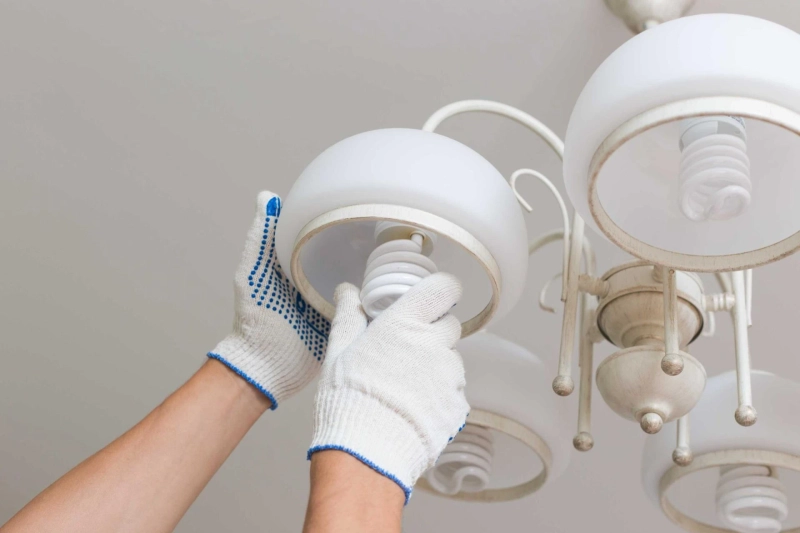Lighting installation is not just about fixing bulbs; it's about creating ambiance, enhancing functionality, and ensuring safety within a space. Whether you're upgrading your home's lighting system or renovating a commercial space, a well-executed lighting installation can transform the atmosphere. Let's delve into the details of this comprehensive guide to lighting installation, ensuring you navigate the process with ease.
Understanding the Basics
Planning Your Lighting Layout
Planning is paramount when it comes to lighting installation. Consider the purpose of each space, the desired ambiance, and any specific lighting requirements. Create a detailed layout highlighting key areas for illumination, such as task lighting for workspaces and ambient lighting for relaxation zones.
Assessing Electrical Requirements
Before diving into installation, it's crucial to assess your electrical system's capacity to accommodate additional lighting fixtures. Consult with a qualified electrician to ensure your wiring can support the planned installations safely.
Preparing for Installation
Gathering Necessary Tools and Materials
Ensure you have all the tools and materials required for the installation process. These may include wires, switches, fixtures, bulbs, screwdrivers, wire strippers, and safety equipment like gloves and goggles.
Safety First: Turning Off Power
Safety should always be a priority. Before beginning any installation work, turn off the power supply to the area where you'll be working. This step prevents the risk of electric shock and ensures a safe working environment.
Installing Lighting Fixtures
Mounting Fixtures Correctly
Proper fixture mounting is essential for both aesthetic appeal and functionality. Follow manufacturer guidelines meticulously to ensure fixtures are securely attached and aligned according to your layout plan.
Wiring and Connecting Fixtures
Carefully wire and connect each lighting fixture according to the manufacturer's instructions. Double-check connections to ensure they're secure before proceeding to the next step.
Testing and Troubleshooting
Conducting Comprehensive Testing
Once installation is complete, conduct thorough testing of each lighting fixture to ensure they function as intended. Test switches, dimmers, and any integrated features to identify any potential issues.
Troubleshooting Common Problems
In the event of flickering lights, uneven illumination, or other issues, troubleshoot systematically. Check connections, bulbs, and switches, and consult with a qualified electrician if problems persist.
Maintenance and Upkeep
Establishing a Maintenance Routine
Regular maintenance prolongs the lifespan of your lighting system and ensures optimal performance. Schedule routine checks to inspect fixtures, clean lenses, and replace bulbs as needed.
Addressing Repairs Promptly
Promptly address any issues or malfunctions to prevent further damage and maintain the efficiency of your lighting system. Timely repairs minimize downtime and ensure uninterrupted illumination.
FAQs
How long does it take to install lighting fixtures?
Installing lighting fixtures can vary in time, depending on the complexity of the layout and the number of fixtures. On average, it may take a few hours to a full day for installation.
Can I install lighting fixtures myself, or do I need a professional?
While some basic installations can be DIY projects, complex layouts or electrical work should be handled by a qualified electrician to ensure safety and compliance with regulations.
What type of lighting is best for kitchens?
Task lighting, such as under-cabinet lights and pendant fixtures, is ideal for kitchens to provide ample illumination for food preparation and cooking activities.
Are LED bulbs more energy-efficient than traditional incandescent bulbs?
Yes, LED bulbs are significantly more energy-efficient and have a longer lifespan compared to traditional incandescent bulbs, making them a cost-effective choice in the long run.
How often should I replace light bulbs?
The frequency of bulb replacement depends on usage and the type of bulb. Generally, LED bulbs can last up to 25,000 hours or more, while incandescent bulbs may need replacement every 1,000 hours.
Can I install dimmer switches with any lighting fixture?
Not all lighting fixtures are compatible with dimmer switches. Check the fixture specifications and consult with a professional to ensure compatibility before installing dimmer switches.
Conclusion
A successful lighting installation enhances not only the aesthetics but also the functionality and comfort of a space. By following this comprehensive guide, you'll be well-equipped to plan, execute, and maintain your lighting system effectively. Illuminate your surroundings and create an ambiance that truly shines with a thoughtfully designed lighting installation.



